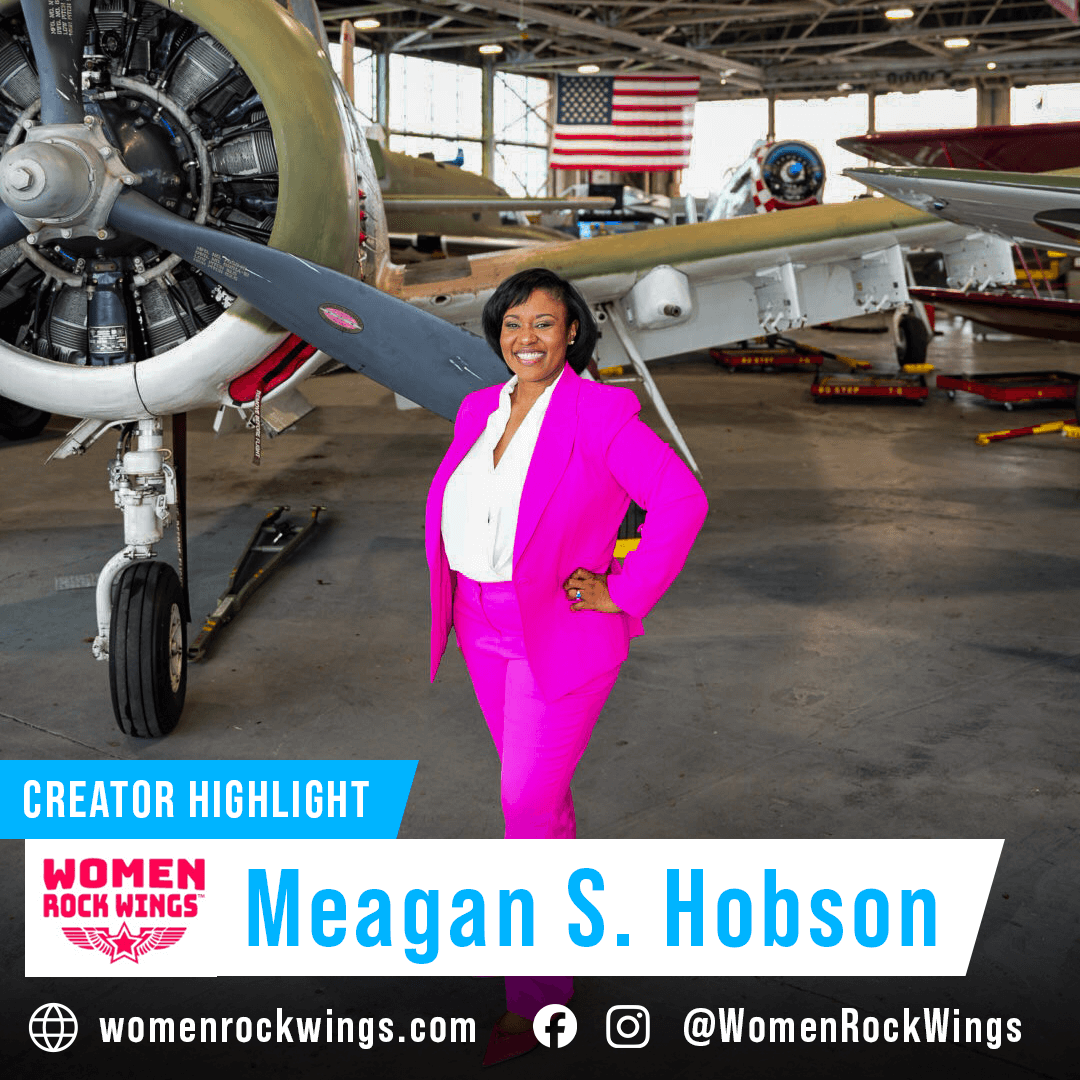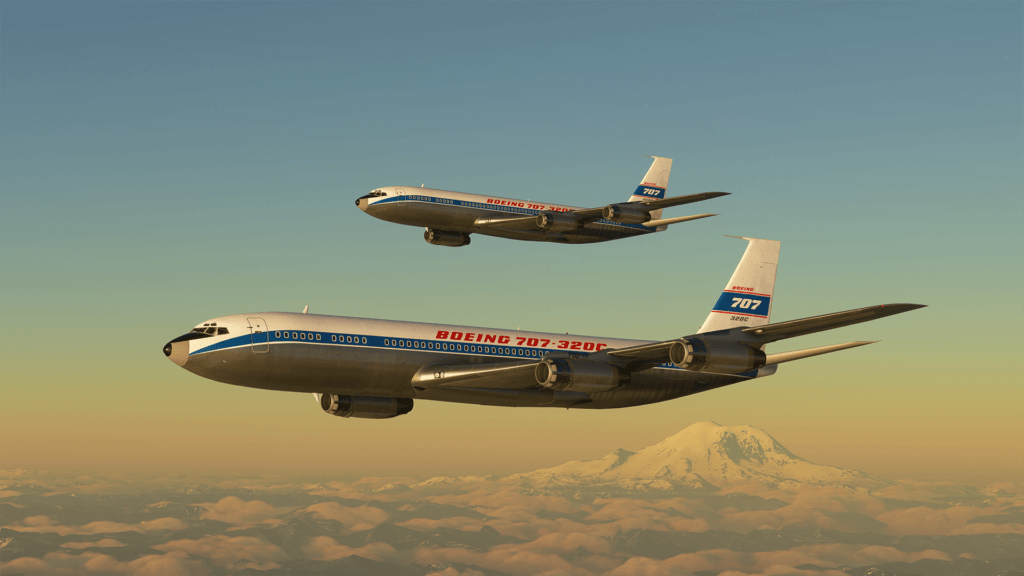ONE OF AVIATION’S BOLDEST JOURNEYS
Microsoft Flight Simulator released Famous Flyer 10: The Boeing 707-320C, the most successful, most produced variant of the famed Boeing 707 family of long-range jetliners. It was the culmination of years of inspired innovation and painstaking engineering.
The late 1940s witnessed blistering advances in aviation technology, with the emergence of the jet engine at the forefront of these sweeping innovations. Boeing, the American aircraft manufacturer renowned for its World War II-era piston-powered bombers like the B-17 Flying Fortress and the B-29 Superfortress, embraced the jet engine and began crafting designs that would leverage its performance. The company’s B-47 Stratojet, a high-altitude, long-range strategic bomber powered by six turbojet engines, took its maiden flight in 1947 and proved extremely successful. The aircraft incorporated Boeing innovations including engine pods and a swept wing design. In April of 1952, the Boeing B-52 Stratofortress took its maiden flight. The bomber shares basic design elements with the B-47, including a swept main wing with podded jet engines. The B-52, latter iterations of which continue to operate, is one of military aviation’s most successful aircraft.
In the same month that the B-52 first took to the sky, Boeing made a bold and risky decision: the company would undertake the secret, self-funded development of an aircraft with similar design features to the B-47 and the B-52 but created as a proof-of-concept platform for commercial and general military utility use. They would build just one and use it as a prototype to generate interest for production variants. The decision was a gamble for many reasons, most notably that the public was not warm to the idea of jet-powered passenger aircraft. The expense of development could potentially bankrupt the company if orders didn’t follow.
AN ICON TAKES FLIGHT:
Just over two years after Boeing’s risky decision, on July 15, 1954, the secretly developed aircraft took its maiden flight. Officially designated the 367-80 and nicknamed the “Dash 80,” the aircraft featured a swept main wing and was powered by four pod-housed turbojet engines. Its demonstration flights, which famously included unannounced barrel rolls, impressed both airline executives and military decision makers.
Development then began on a new airframe based on the Dash 80, the 707. The first iteration of the quadjet airframe, the 707-120, took its maiden flight on December 20, 1957, and was introduced into mainline service on October 26, 1958, flying for Pan American Airways. This first lineage of the 707 marked the beginning of a historic line of 7×7 series aircraft that continues to this day.
A REFINED ICON
Boeing introduced the 707-320C, the final version of the 707 line, in the early 1960s. The 320C was a “convertible” (hence “C”) variant, able to serve as a passenger carrier or to move cargo. The C was an enhanced iteration of the 707-320B, the most visually distinguishing feature of the C being the fuselage cargo door. The 320C also boasted an updated wing with three leading-edge flaps and improved take-off and landing performance.
The 707-320C was the most successful and the most plentiful of the 707 family with 337 units manufactured. Airlines including Northwest, Pan Am, Air France, and Braniff flew the airframe. Produced until 1978, the 707-320C flew into the early 21st century.
During its operational tenure, the 707-320C was crewed by three and could carry up to 219 passengers, 13 pallets of cargo, or a combination of both. The aircraft measures 152 feet, 11 inches in length, stands 42 feet tall, and has a wingspan of 145 feet, 9 inches. It was powered by four wing-mounted Pratt & Whitney JT3D low-bypass turbofan engines, each developing up to 19,000 pounds of thrust. The jetliner had a range of 3,337 miles and cruised at 604 miles per hour.
RELIVE THE THRILL – THROUGHOUT THE GLOBE
Microsoft Flight Simulator celebrates this magnificent aircraft by highlighting it as its tenth Famous Flyer. Experience the thrill of lifting this icon of the jet age into the sky and taking it around the world in Microsoft Flight Simulator.
The 707-320C comes with six liveries: Boeing Delivery, World Travel, Pacifica, Orbit, Emerald Harbor and PanAm and is available today in the in-sim marketplace for $14.99. The sky is calling!
Microsoft Flight Simulator is available for Xbox Series X|S and PC with Xbox Game Pass, PC Game Pass, Windows, and Steam, and on Xbox One and supported mobile phones, tablets, and lower-spec PCs via Xbox Cloud Gaming. For the latest information on Microsoft Flight Simulator, stay tuned to @MSFSOfficial on X (formerly Twitter).

